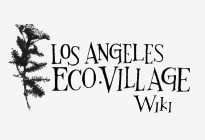- What is an intentional community?
An intentional community is a group of people who have chosen to live and/or work together in pursuit of a common ideal or vision.
Examples of common ideals or visions:
- “Our basic guiding principles are cooperation, egalitarianism, income-sharing, and non-violence.” Twin Oaks, Louisa, VA
- “The vision of the Cooperative is to create a sustainable society where people are cooperatively living, learning, and working together.” Walnut Street Co-op, Eugene, OR
- “A closer relationship with God as individuals and as a group.” The Gathering, Schuyler, VA
- “We are a diverse community in an urban neighborhood that joins together to create a higher quality of life and chooses a lower impact lifestyle for the good of all.” LAEV (draft), Los Angeles, CA
Types of intentional communities:
1) income-sharing (“commune”): members co-own property and financial assets
2) co-housing: collaborative housing which combines private spaces, such as single-family houses or apartments, with shared community spaces, such as a common house and gardens
3) housing co-op: a legal entity in which shareholders have the right to occupy one housing unit within a larger structure
4) eco-village: “a human-scale, full-featured settlement with multiple centers of initiative in which human activities are harmlessly integrated into the natural world in a way that is supportive of healthy human development, and can be successfully continued into the indefinite future.” (Robert Gilman)
5) religious spiritual communities: members share a particular spiritual orientation, community used as a tool for furthering spiritual practice
6) shared household: all community members live together in a single house
- Note: these categories are not mutually exclusive! For example, LAEV is both an eco-village and a co-housing community, and aspires to be a housing co-op.

